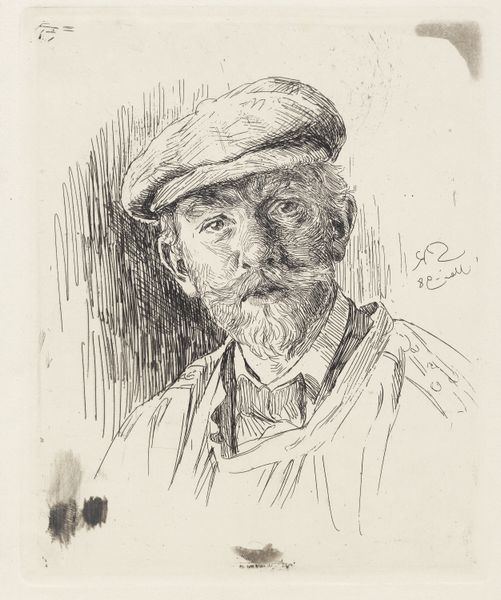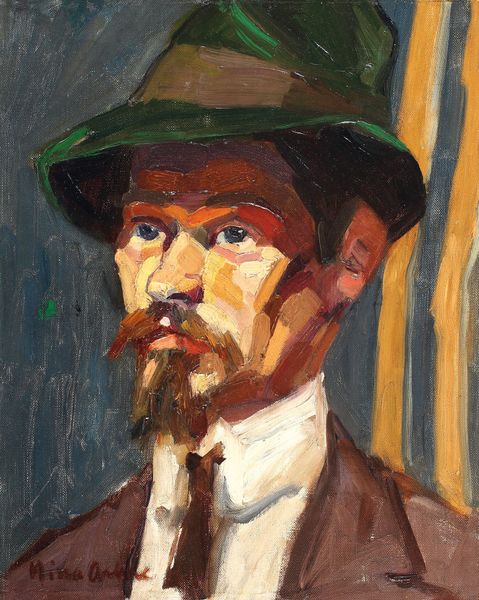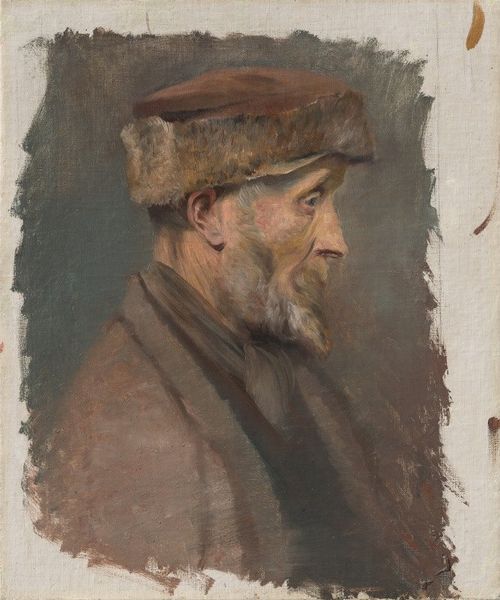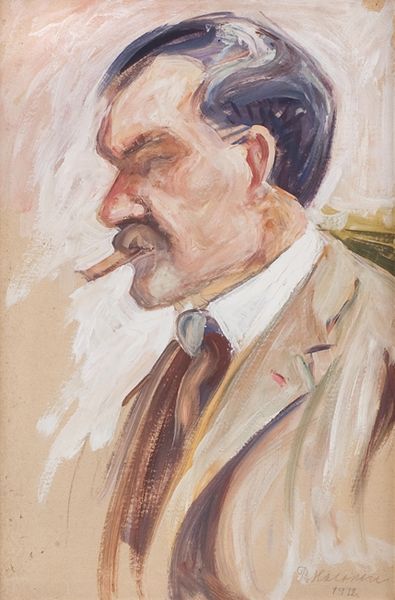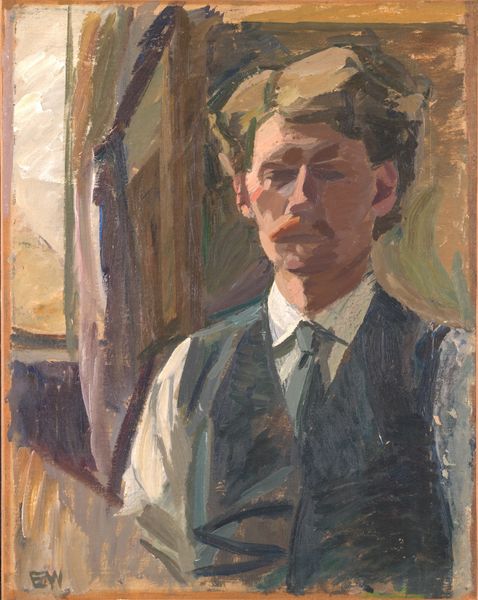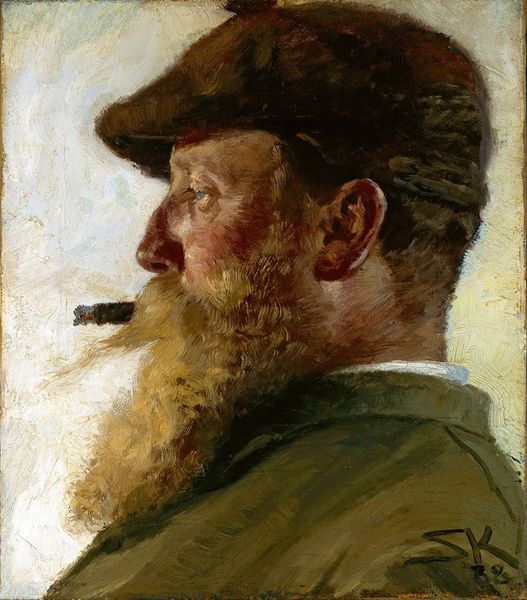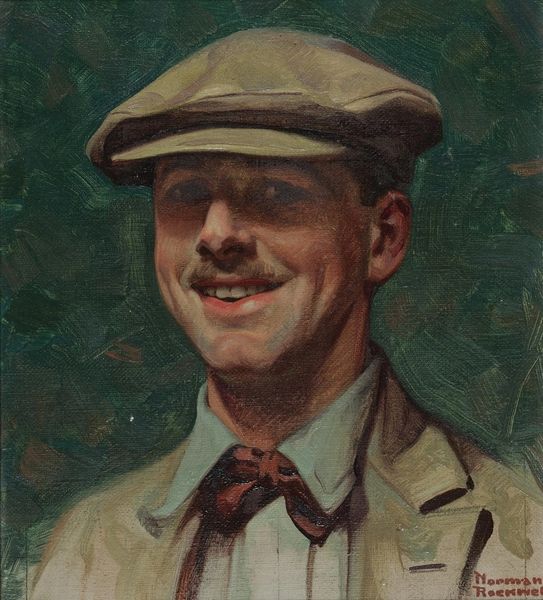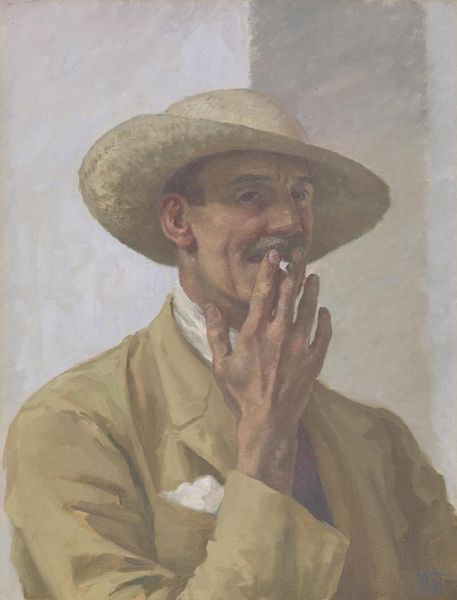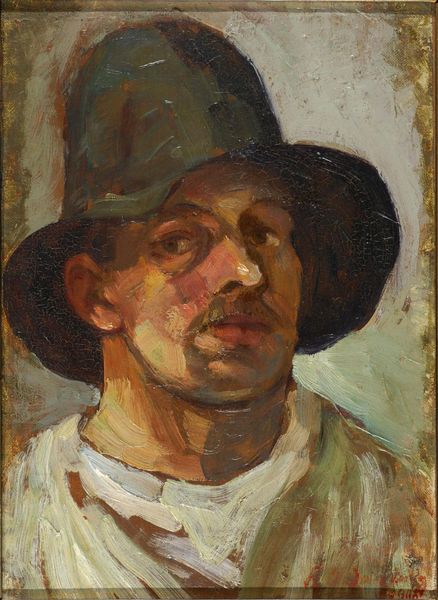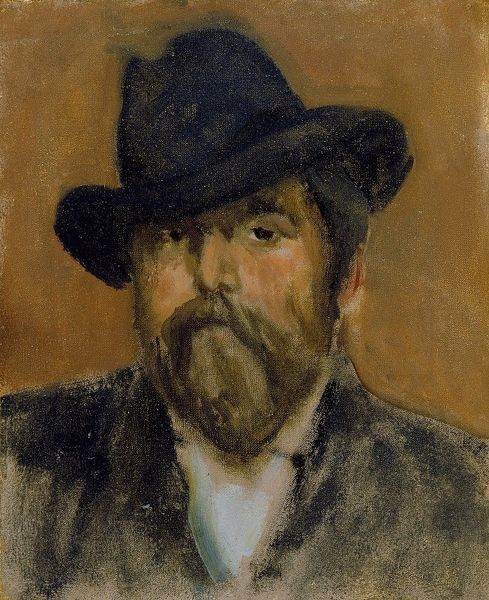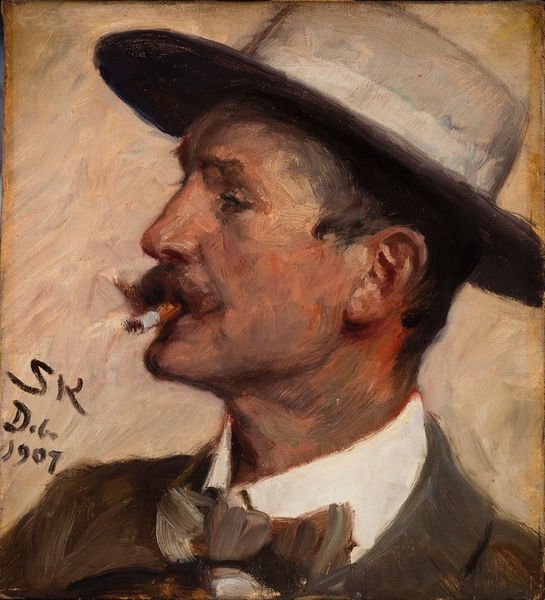
Copyright: Public domain
Curator: Standing before us is "Portrait of Man," an oil painting by Nicholas Roerich, created around 1895. Roerich, better known for his later Symbolist landscapes, presents here an intriguing study in Impressionistic style. Editor: My initial impression is a man caught mid-thought, perhaps gazing at a horizon only he can see. The palette is surprisingly muted, but the brushstrokes convey a raw, almost urgent energy. Curator: Roerich’s placement within the artistic circles of late 19th-century Russia offers key insights. He was engaging with nascent Modernist trends and this piece exemplifies the period’s broader experimentation with portraiture, stepping away from strict academic realism. Editor: Indeed. His upward gaze draws our eye, yet there’s an ambiguity in his expression. What socio-political conditions shaped this upward-looking hope, or perhaps yearning, considering the artist’s later interests? I see reflections of burgeoning socialist thought. Curator: An interesting suggestion. The lack of explicit contextual markers – his plain clothing, the absence of identifying details – might speak to Roerich's interest in elevating the "everyman," reflecting populist sentiment. But his aesthetic concerns are front and center. The brushwork, especially around the beard, and the overall focus on light certainly suggest a conscious engagement with Impressionistic methods circulating throughout Europe at the time. Editor: Absolutely, the influence of impressionism is evident in the short, broken brushstrokes and the artist’s acute attention to light and shadow, which lends to its overall emotional affect. The rather ambiguous details provide an open interpretation: maybe this is less a portrait and more of an ideal. Curator: And we mustn't overlook the museum environment itself in shaping our reception. The display alongside other works from the period undoubtedly colors our perception, encouraging a certain historical framing. Editor: The history we inherit shapes how we see, yet what resonates powerfully with our own social contexts? Is it a sense of yearning that crosses over time, connecting us with figures long gone? It remains deeply engaging. Curator: A provocative note to end on. This portrait, embedded in layers of artistic influence and historical interpretation, offers ongoing dialogue between us, the viewer, and Roerich himself. Editor: Yes. Each brushstroke opens a conversation through time, about light, identity, and our collective history.
Comments
No comments
Be the first to comment and join the conversation on the ultimate creative platform.


